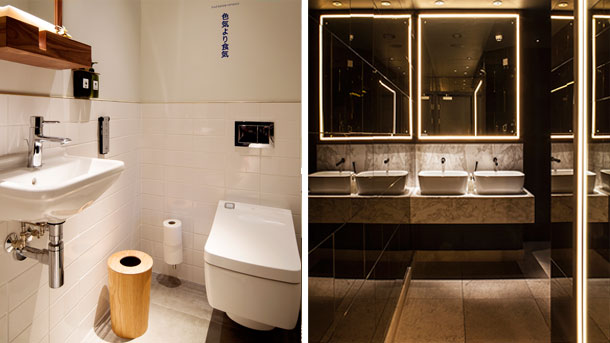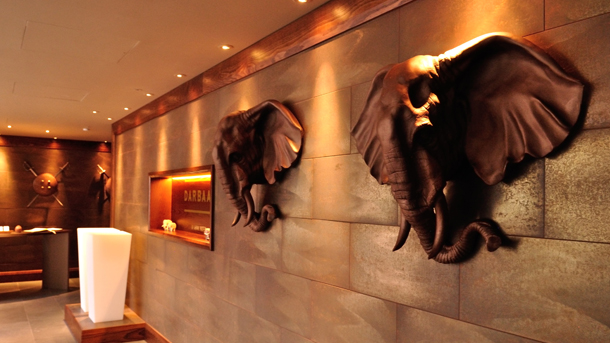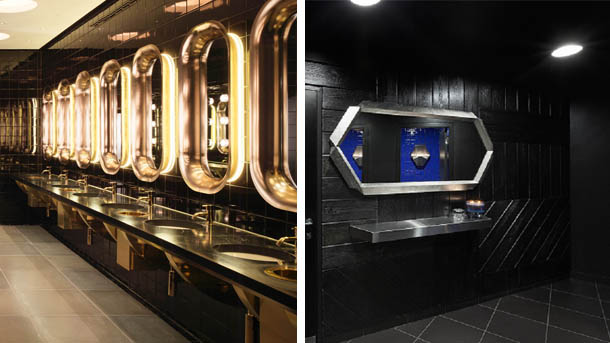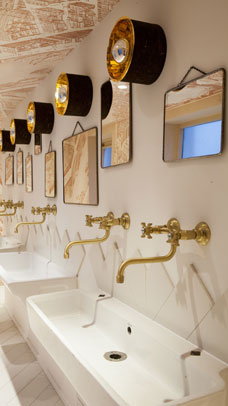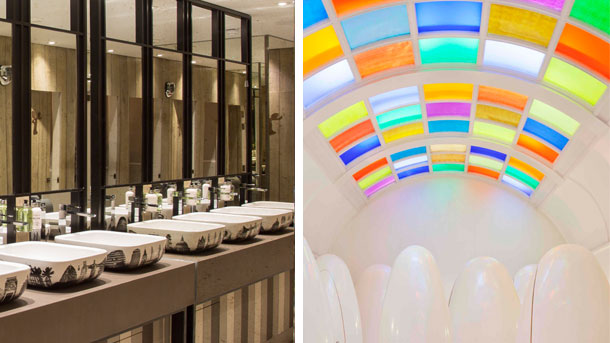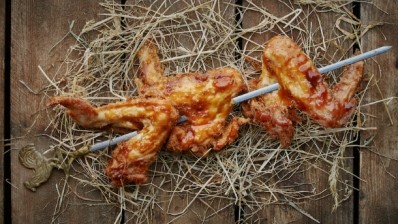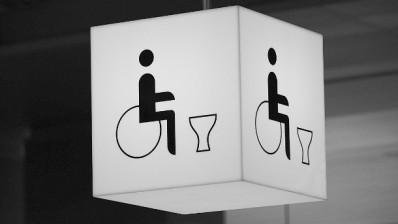The bottom line: Why your business needs great toilets
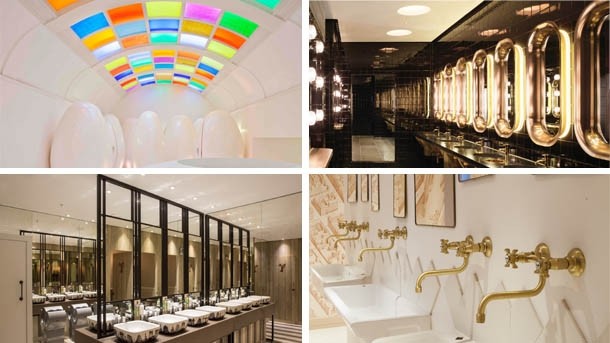
Ask a restaurateur or hotelier about their establishment, and they’ll likely tell you about the food, the cocktails, the marble bar top, or the carefully-restored historical features from the building’s previous life as a historic coaching inn.
But they’ll hardly ever tell you about the toilets.
And yet, for many, the WC will be the first or last impression of your business that your customers get.
No matter how wonderful the meal or stay, customers will still remember that dirty, dark loo with its lack of toilet paper and overflowing bins, and if you’re really unlucky, they might even Tweet about it.
As Karen Taylor, associate designer at restaurant specialists DesignLSM, explains: “Toilets are an essential part of any good restaurant design. If the toilets do not reflect the same standard as the rest of the space, it can reflect very badly on the brand.”
More than ever, it’s crucial to get your toilets’ design, feel, and cleanliness right.
Keeping it clean
When it comes to your business’ loo, most would agree that cleanliness is key. You can have the most incredible décor ever seen, but if that sink’s not tidy, no-one will linger long enough to notice.
In fact, a survey from technology firm Altodigital found that 94 per cent of customers would never return to a restaurant if its toilets had poor hygiene levels. This is compared to just 10 per cent who would send food back if it contained a hair or was mouldy (seven per cent).
Bathrooms, it seems, could be even more important than the food.
Sosharu, Clerkenwell / The Vincent, Liverpool
Toilet training
Apart from regular deep cleaning from a dedicated cleaner, during service or peak times cleanliness is often a simple matter of training staff to check regularly, so that easy-to-manage things – such as toilet paper running low, a lack of hand towels, or spilled water and soap – can be sorted out quickly before they escalate.
Martin Orbons, general manager of Cottons Caribbean Restaurant & Rhum Shack in London’s Notting Hill, says: “Keeping up cleanliness standards should not be underestimated,” he says. “A dirty or rundown toilet can completely change a guest’s opinion of the restaurant. Our staff do half-hourly checks of our toilets.”
Indeed, a survey from hospitality hygiene brand Tork recently found that 90 per cent of customers would “judge an operator on the quality of its washroom”.
Abdul Yaseen, chef-owner at Indian restaurant Darbaar in Shoreditch, whose previous career has included the Michelin-starred Cinnamon Club, agrees: “A smelly and not-looked-after toilet would spoil the whole experience instantly. The freshness of the toilets would affect guest experience negatively, and could cause them to have no confidence towards the restaurant’s customer service.”
At Darbaar, the toilets go further than simple cleanliness – as well as being kept spotless, they also have heated seats, and push-button systems designed to allow guests to use them more hygienically.
Sosharu, Jason Atherton’s Japanese-style site in Clerkenwell, operates its toilets along the same lines (pictured above, left), invoking technology to great effect with automatically opening doors upon entering, heated seats, and in-toilet washing facilities plus dryers tailored to men and women.
“Good hygiene builds confidence in guests to trust in our standards,” Yaseen says.
Darbaar, Shoreditch
Fix up look sharp
But it’s not just about keeping things clean. Décor is also a top priority.
As Afroditi Krassa, designer of some of the UK’s most high-profile sites, such as the four-strong Dishoom group, French chain Café Rouge, luxury hotel the Andaz London Liverpool Street, and Heston Blumenthal’s Perfectionists’ Café in London Heathrow, says: “Toilets should be an integral part of the narrative. If they feel forgotten, it can even make the front of house environments feel superficial.”
Taylor at DesignLSM adds: “Toilets are a place where you can create the biggest impact with memorable design. We look at how we can translate the experience from the main reception and dining area to the intimate bathroom space. Every touch point of a business is being registered consciously or sub-consciously.”
One such example are the DesignLSM-created bathrooms at The Vincent Café and Cocktail Bar in Liverpool (above, right) – whose backers include the footballer Steven Gerrard ‒ and whose décor was as carefully considered as that of the rest of the space.
“We created an opulent and relaxing bathroom in keeping with The Vincent’s high end look,” Taylor explains. “That meant bringing in key finishes from the dining area, such as copper detailing and bespoke marble worktops.”
Cottons Caribbean Restaurant also carries its beach vibe from bar to bathroom, with, as Orbons puts it, “vibrant, traditional murals continuing the tiki shack feel of the restaurant”.
Even sites as boldly designed as Mondrian or Craft London – both Tom Dixon Design Research Studio (DRS) creations, pictured below ‒ feature strong décor in their toilets: Mondrian’s are a vision of black and golden light; while Craft London also uses dark colours to create a dramatic yet serene feel.
The Mondrian, London Southbank / Craft London, North Greenwich
Find your chill
But if your restaurant or hotel design feels too bombastic for the bathroom, it’s not a problem. Even a more low-key creation can still offer “wow factor”.
Frenchie, the new site from Gregory Marchand in London’s Covent Garden, has used its bathroom as a canvas for a beautiful design, to not only carry on the décor from the restaurant’s general theme, but enhance it too (pictured, right).
From Parisian set designer Emilie Bonaventure, the bathroom features a custom-designed and coloured map of Paris – a “Plan de Turgot” in an 18th century style ‒ in a bid to offer a theatrical yet relaxed cocoon.
“Toilets are personal spaces, where the hustle and bustle of the environment is often pared back,” explains Krassa.
Famously, the toilets at Mayfair favourite Sketch London (pictured, below) – created by designer Noé Duchaufour-Lawrance in collaboration with Sketch owner Mourad Mazouz – actually make strong use of the room’s dark and hidden setting, offering guests individual “pods” to retreat into, under softly coloured lighting, and zen-like recording tracks playing in each egg-style cubicle. The effect is certainly “wow”, but strangely calm.
And, boasting as it does one of the most-photographed and Instagrammed bathrooms in London, in this social media-obsessed age Sketch has also undeniably recognised the value of “shareable” design.
Spend a penny, share a pic
In fact, guests’ desire to share their experiences even when in the bathroom ‒ although, one hopes, not actually from within the cubicles themselves ‒ was something strongly considered by Krassa when designing the loos at Indian-style restaurant group Dishoom.
“The best toilets have an unexpected and memorable element,” she explains. “We’ve included a cabinet with vintage Indian products, and a lot of customers take pictures. That’s great for social media.”
Sometimes, the posts write themselves: the loos in Aqua Shard, the British-style restaurant towering 31 floors above London, famously offer views across the city directly from the urinals and sinks.
But DesignLSM also appreciated the power of quirky visuals online when creating the loos at Absurd Bird, the recently-opened new fried chicken joint in Whitechapel. “There is a weird and wonderful suitcase vanity unit in there, which when opened, displays a birdwatcher’s map, which illustrates the brand’s story further,” Taylor explains.
The Fable, Drake & Morgan, St. Paul's / Sketch, Mayfair
Feeling good
But, as everyone on social media knows, the most memorable posts are about how things make you feel, not merely how they look.
The best toilets must therefore also consider how guests actually use them, and be recognised as a prime opportunity to offer one last touch of hospitality before the customer leaves.
“We pay close attention to detail,” explains Pooja Sharma Jones, sales and marketing director at nine-strong restaurant and bar group Drake & Morgan (whose The Fable site, is pictured above, left). “Things like coat and bag hooks often get forgotten, but they are very important when keeping your favourite handbag off the floor. We also offer complimentary sweets in a jar. Toilets must provide a little extra, and make guests feel pampered.”
Details such as nice towels are also crucial: in fact, a poll from laundry company Xeros found that 94 per cent of hotel customers believe towels can point to the wider quality of the establishment and overall customer satisfaction, with 84 per cent saying towel softness, cleanliness and thread count would influence their perception of the brand.
Other small-but-appreciated details include great mirrors and lighting.
As Orbons at Cottons Caribbean Restaurant puts it: “We made sure that the lighting is warm and flattering. No-one likes to be shocked by their appearance on a night out or on a first date.”
It’s clear: while toilets may be the last place your guests go before leaving, they should definitely be more than an afterthought.
No bum notes: 5 tips for your toilets
- Cleanliness – without this, all is lost. Keep toilets super-clean and regularly checked for everything from water spills to dirty floors to, well…anything else
- Design – toilets needn’t be utilitarian boxes. Consider your loo design as carefully as that of your main spaces, and customers will be impressed
- The wow factor – if your loo is memorable, people will talk about it, especially as great bathrooms are often unexpected. This can only help your brand and spread positive word-of-mouth reviews
- Mirrors and lighting – While design of bathrooms is key, they don’t have to be as in-your-face as your dining area or lobby. Remember that toilets are intimate spaces where people retreat for a makeup touch up or break in conversation, and good lighting and mirrors can enhance functionality and design
- The devil is in the detail – Remember extra things such as coat and bag hooks, bins, extra loo paper, quality soap and high-end towels, and your guest will feel properly looked-after, right down to their final moments in your establishment
